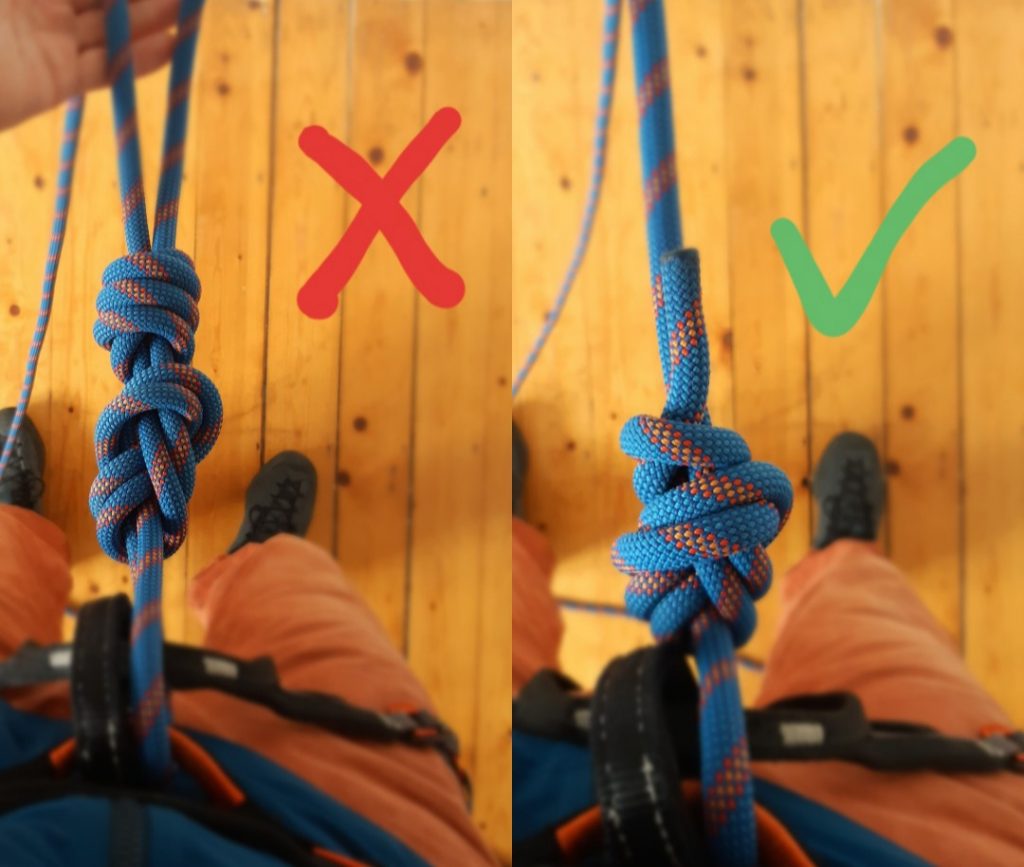Tying in to the rope is probably the most important thing we do every time we climb. It is the essential connection point between our harness and the rope, if it fails we have little chance of avoiding injury or worse.
Before we start, let’s look at a video of tying in to the rope with a re-threaded figure of 8.
5 tips for tying in to the Rope
Use a re-threaded figure of 8
While there are other knots to tie in with, such as the bowline, my preference for instructing climbers and for my own personal climbing will always be the re-threaded figure of 8. There are many reasons why I prefer it, but mainly it’s because:
- Even a poorly or incorrectly tied figure 8 with a stopper knot could still hold long enough to work. However, a poorly or incorrectly tied bowline will be way more likely to fail.
- It’s easier to tell from a distance or buddy check whether it’s tied correctly or not.
Proper tail length
While it’s important to have an appropriate tail leftover, too often climbers have an excessive amount of tail left. This looks sloppy, even if tied up into a big stopper knot.
Find a sweet spot that makes for the perfect amount of tail (approx 6-8 inches), which will allow you to add a small stopper knot. I measure along one outstretched arm to the inside of my armpit.
Never measure along two fully outstretched arms, which is the common mistake I see happening.

Make a small loop
A large tie in loop looks sloppy, can get caught or snagged while climbing and can lead to belaying or hauling problems down the line if it stretches too much when loaded.
You should aim to copy the size of your harness loop when tying the rope loop. To do this, move your first fig 8 knot as close to the harness as possible, before re-threading.

Tie into both harness loops
Rather than tie into your central harness loop, tie into the waist and leg loops holding your harness loop in place.
Why be clipped into one loop, when you can be clipped into two? Its that simple.
A debate rages on whether to pass the rope through the top (waist loop) or bottom (legs loop) first. I understand both points of view, but I don’t teach a preference.
I teach people to always always be super vigilant when tying in, just make sure you go through both, again it’s that simple.

Concentrate fully and always buddy check
When tying in, ignore everything going on around you including your climbing partner. It is very easy to get distracted mid-way through tying in and not finish the job.
This may seem unlikely, but there are many recorded examples of this happening, even to professional climbers.
No matter who you are climbing with, always buddy check their knots and have them check yours. Sometimes we can feel awkward when doing this with more experienced climbers, but just think how awkward it’ll be if you forget and your partner has an accident.
Please feel free to contact me if you would like to discuss any aspect of this post or other skills and never forget to dress & stress knots thoroughly!


